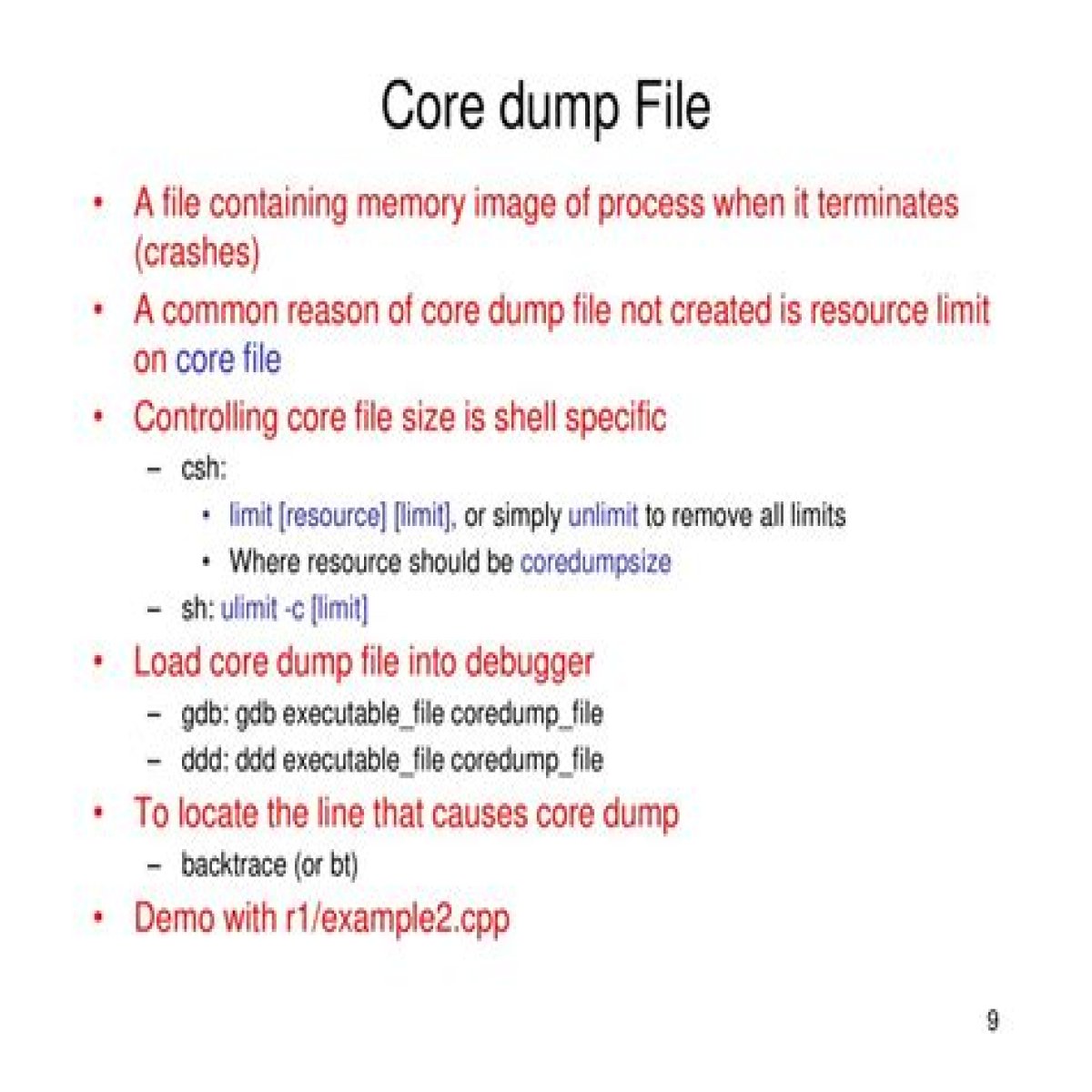What is core file size in Ulimit?
ulimit is a program, included in most Linux distributions, that allows you to specify many file size limits for the shell and all of its subprocesses. The above commands set the core file size to 100 Mb or “unlimited”, respectively.
How do I enable a core file?
To enable writing core files you use the ulimit command, it controls the resources available to a process started by the shell, on systems that allow such control. following problem. Normally SSH is used to logon to the server.
What is in a core file?
What is a core file? A core file is an image of a process that has crashed It contains all process information pertinent to debugging: contents of hardware registers, process status, and process data. Gdb will allow you use this file to determine where your program crashed.
What is core file size in Linux?
The maximum size of the resulting core filename is 128 bytes (64 bytes in kernels before 2.6. 19). The default value in this file is “core”.
How do you stop a core file from generating?
Disabling core dumps on Linux
- Open the terminal app and log in using the ssh command for remote cloud server.
- Then edit the /etc/security/limits. conf file.
- Append the following lines: * hard core 0.
- Make sure the Linux prevents setuid and setgid programs from dumping core to.
- Save and close the file.
Where do core files go in Linux?
On Linux operating systems, core files are, by default, named “core” and are located in the working directory of the application which faulted. In the case of TM1, this is usually the tm1/bin64 directory.
How do I Analyse a core file?
With a core file, we can use the debugger (GDB) to inspect the state of the process at the moment it was terminated and to identify the line of code that caused the problem. That’s a situation where a core dump file could be produced, but it’s not by default.
Where are core files dumped?
The default path where core dumps are stored is then in /var/lib/systemd/coredump.
Why is core dumped?
Core dumps are generated when the process receives certain signals, such as SIGSEGV, which the kernels sends it when it accesses memory outside its address space. Typically that happens because of errors in how pointers are used. That means there’s a bug in the program. The core dump is useful for finding the bug.
Can I delete core files in Linux?
core files are written for post mortem of crashed processes, you must find out what is happening (a segmentation fault or other crash might signal a serious security vulnerability!). As the file is written after the program crashed, they can safely be removed at any time.
What is aborted core dumped?
Core Dump/Segmentation fault is a specific kind of error caused by accessing memory that “does not belong to you.” When a piece of code tries to do read and write operation in a read only location in memory or freed block of memory, it is known as core dump. It is an error indicating memory corruption.
